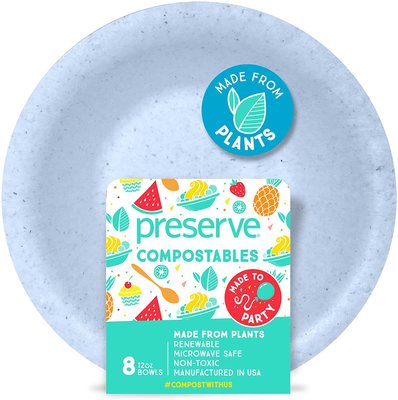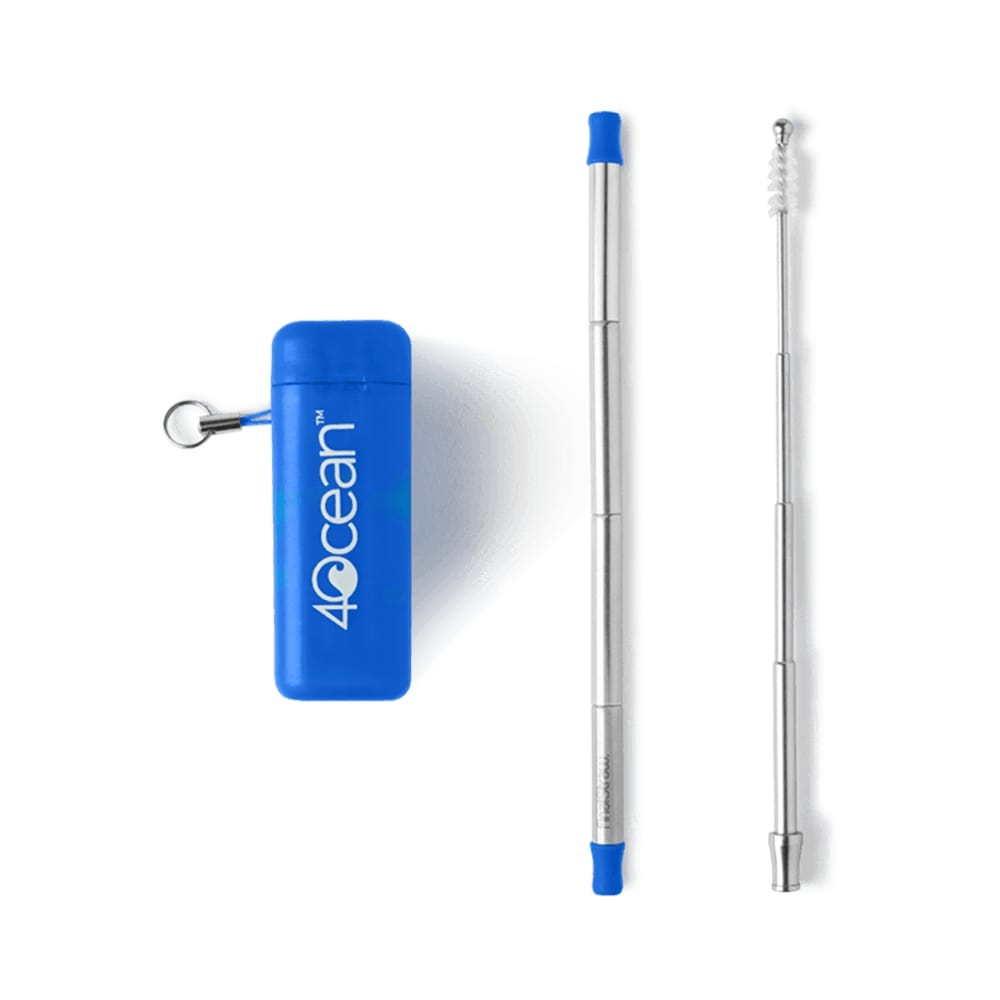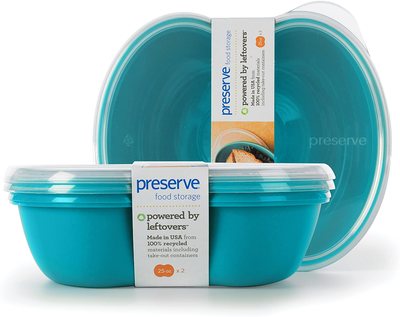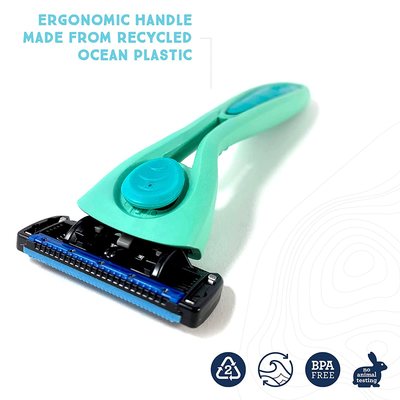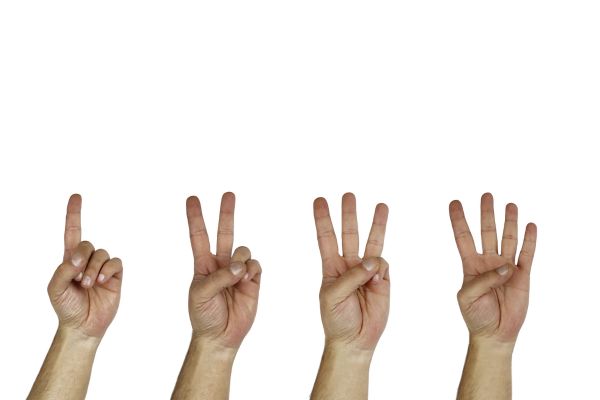You are likely to come across Polypropylene (PP) plastic in your regular day to day activities. It is one of the top 5 most common plastics. You can identify it either by the number 5 in the chasing arrows symbol or the letter pp. Products like yogurt and margarine containers, syrup bottles, bottle caps, plant pots and even some car parts are made with PP plastic but it can also be used to make more flexible products like chip packets or cereal box liners.
Manufacturers use polypropylene because it’s lightweight and strong but also offers good protection from moisture or chemicals and handle a high temperature. In other words you can bend it and twist it and it will keep it’s shape.
The question you are probably interesting in is can you recycle plastic number 5. The answer is yes but it depends on the type and your local rules. Learn how you can identify it and recycle it below.
Learn more in our article: what is plastic.
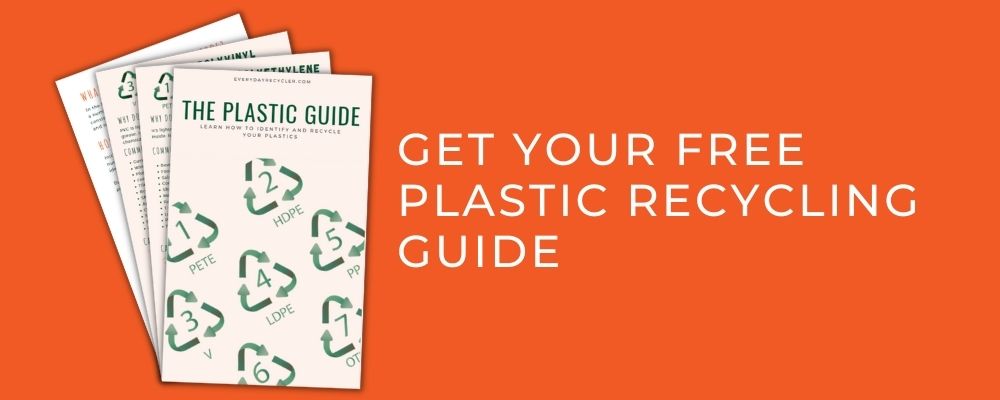
Polypropylene is similar to polyethylene, except it has propylene monomers instead of ethylene monomers. PP has many similar properties to PET, HDPE, and LDPE. The main difference is it has a much higher melting point.
This makes it useful for holding hot materials and is why it’s often used for food containers.
It is also suitable for use in yogurt production, which is why you often find yogurts sold in polypropylene containers.
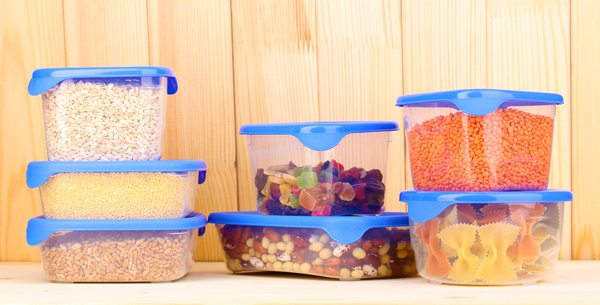
Quick Navigation
Why Do We Use Polypropylene?
The properties of PP include:
- Good chemical resistance to acids, alkalis, and most solvents.
- Resistance to moisture.
- A high melting point gives it excellent heat resistance. That’s why you’re able to reheat your leftovers in Tupperware without worrying about it melting!
- It’s lightweight and strong.
- Plus, it’s a good electrical insulator.
Items Made From Polypropylene
The properties of PP make it ideal for reusable food containers and similar types of packaging. It’s useful because it can take some rough treatment.
You can twist and bend it, and it holds its shape well. This is one of the reasons it’s also commonly used to make bottle caps.
Polypropylene can be made into both rigid and flexible packaging. Below are some examples of both types that you might recognize from your day-to-day life.
Rigid Polypropylene Examples
- Yogurt containers
- Margarine containers
- Syrup bottles
- Bottle Caps
- Straws
- Tupperware and other plastic food containers
- Take away food containers
- Disposable cups and plates
- Toothbrushes
- Plant pots
- Items used in cars, e.g., bumpers, cladding, and exterior trim
- Sunglasses
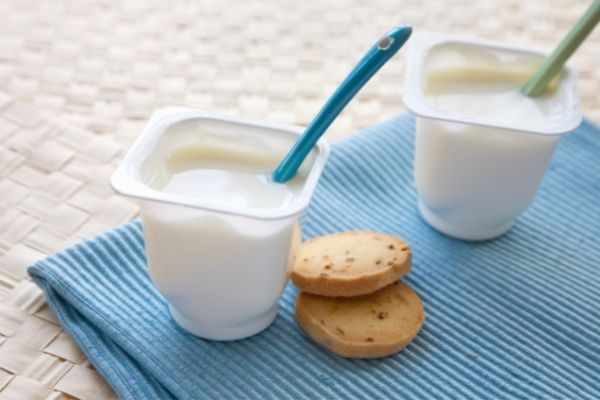
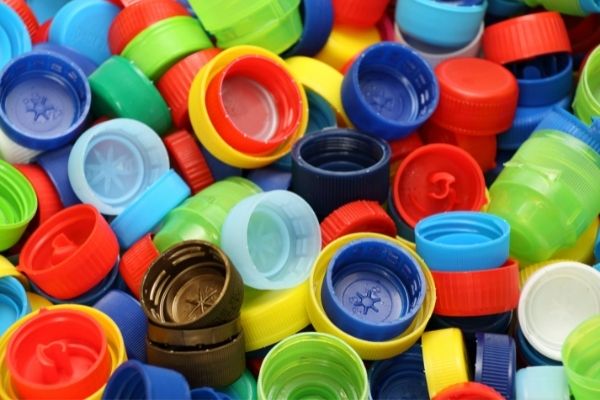
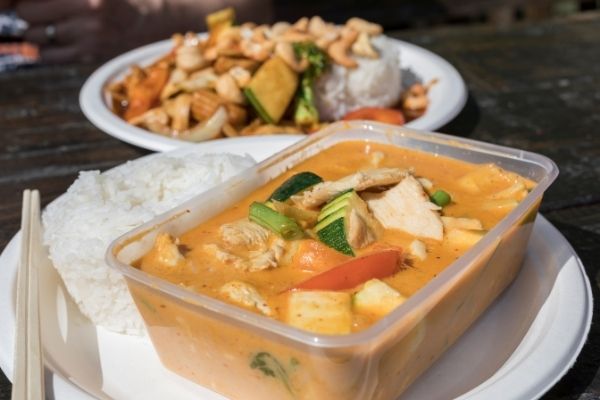

Flexible Polypropylene Examples
- Food and confectionary packaging, e.g. Chip packets, biscuit packets.
- Plastic film or soft plastics
- Cereal box liners
- Plastic Diapers
- Rope
- Banknotes
- Stationary
- Fabric used for clothing and bags

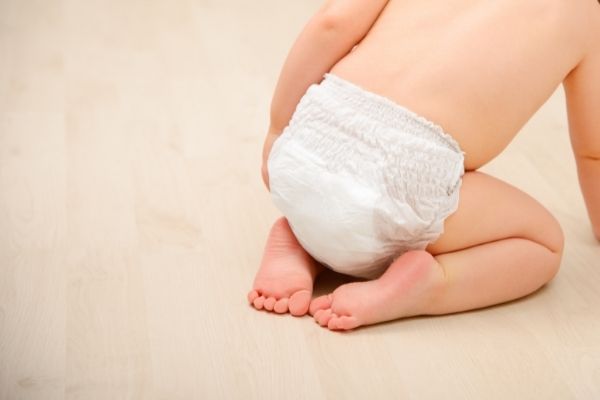
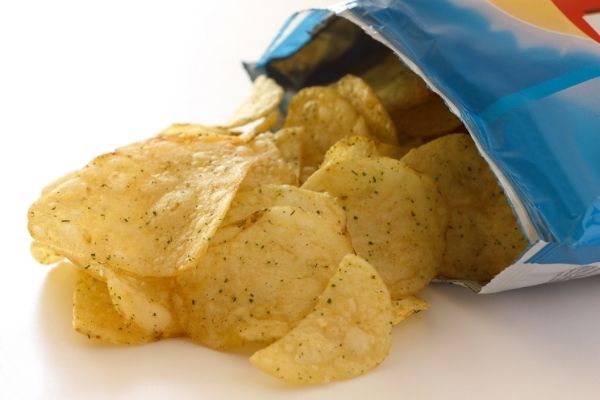
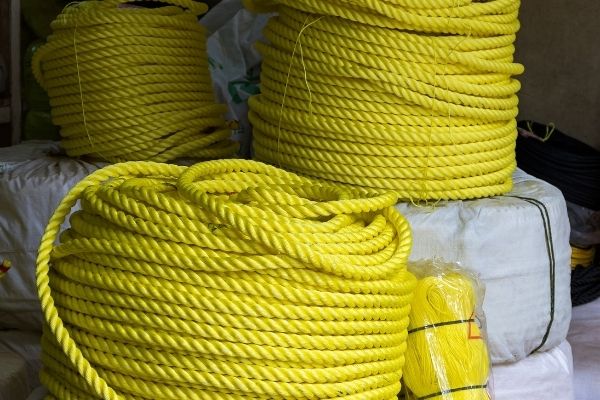
Polypropylene is used in many other items, particularly where a laminate or mixed material is used. Some examples include luggage, ski boots, household appliances.
Ways to Reduce and Reuse Number 5 Plastic?
Here are some ways to reduce your use of items made from polypropylene.
- Avoid straws altogether or take your own with you.
- Avoid using single-use cups, bowls, or plates. Why not try eco-tableware made from wood or palm leaves?
- Try using cloth diapers instead of disposable ones.
- Making your sauces and condiments is a good healthy way to reduce your use of LDPE bottles and containers. Use all those glass jars you have been hoarding. Learn more about glass and how it is made in what is glass made of. Or get some tips on recycling in glass recycling.
- Make your own yogurt and use containers you already have.
- Take note of the manufacturer’s instructions for caring for your Tupperware or other containers to make sure they last.
- Buy products already made out of recycled materials or which use recycled packaging.
Can Polypropylene be Recycled?
Yes, polypropylene plastic is recyclable.
Both rigid and flexible forms can be recycled; however, the steps for recycling are different.
Many curbside recycling programs accept rigid plastic products like plastic bottles or plastic tubs.
However, most will not accept flexible PP like bags or soft packaging.
It’s important not to put plastic bags or other soft plastics into your curbside recycling bin.
This includes diapers (referred to as nappies in Australians) which are particularly problematic for recycling facilities.
How to Recycle PP Rigid Plastic
Most curbside recycling programs accept plastic number 5 or polypropylene but you should always check your local area to be sure.
- Look for the number 5 in the chasing arrows on the item
- Check if your local curbside recycling program accepts plastic number 5.
- Clean excess food or drain out the liquid
- Place the item in your curbside recycling bin
How to Recycle PP Soft Plastics
In many places, your soft plastics can be recycled through local drop-off points at supermarkets or other stores.
- Do the scrunch test. If the item can be scrunched up, it is in the soft plastic category, whereas it’s considered rigid if it bounces back into shape.
- Find your nearest soft plastic recycling – Soft plastic recycling near you.
- Check that the item is accepted through your soft plastic recycling program.
- Collect your plastic bags and soft plastics, scrunch them up, and place them in a bag.
- Make sure all food scraps are removed, and the plastic is dry.
- Remove any receipts or other items.
- Next, take the plastic bag full of soft plastics to your local drop off-center.
What is Recycled PP Made Into?
Below are some great examples of products made using recycled polypropylene.
Recycled Food Storage Container Set
Practical food storage containers made from 100% recycled plastic no 5. BPA and Melamine free and dishwasher safe. These are great sturdy storage containers.
We love these ergonomic toothbrushes. The handle is made with 25% recycled ocean-bound plastic recovered during ocean clean-ups and 75% recycled polypropylene.
Plus, 25% of the profits from the range are donated to support non-profits to help clean trash from oceans and beaches.
And you can recycle it once it’s worn out through the toothbrush takeback recycling program.
Recycled Razor System with 5-blade cartridge
With a handle made using Recycled Ocean Plastic and a 5-blade cartridge, this razor system supports recycling and supports reuse. An excellent replacement for your throw-away single-use razors.
There are many more products that recycled polypropylene can be made into, including:
- Kids toys
- Cutting boards
- Buckets and storage bins
- Brooms, brushes, and garden rakes
- Furniture
- Flower pots
- Fabric for bags and clothing
- Sunglasses
- Items used in the automotive industry, e.g., such as bumpers
What happens when PP is not recycled?
Despite being one of the most common plastics globally, polypropylene is also one of the least recycled plastics.
It’s reported less than 1% of PP is recycled.
When sent to landfills, polypropylene takes 20-30 years to decompose and may leach chemicals into the environment.
The use of recycled material, whether it is polypropylene or other plastic, glass, metal, or paper, reduces the use of virgin material. And would therefore reduce the need for the processes required to extract these materials.
In other words? Reduce, Reuse, Recycle.
The future of polypropylene recycling
One of the problems with PP is it doesn’t have resistance to solvents and aromatics – so it can take on the smell of the material inside it. But a chemist at Proctor and Gamble has now developed a new way of recycling PP, which removes these bad smells and chemicals from its previous use.
The recycled material can then be used to make new packaging.
PureCycle Technologies, a start-up licensed to use the technology, was up and running on a commercial scale in 2019.
Their forecast is to process 119 million pounds of plastic waste a year, and they have already signed contracts with major companies.
Test your knowledge of Plastic Number 5
Complete the quiz to see how much you’ve learned about polypropylene and how to recycle it.
Summary
We use polypropylene because it has good chemical and moisture resistance, is lightweight and strong and can handle the heat. Common PP products include yogurt containers, bottle caps or lids, syrup bottles, Tupperware, disposable plates and cups, rope, cereal box liners, and banknotes.
But as with all plastics it will last a long time if it’s sent to landfill. When the plastic does finally break down it can result in microplastics that can leach into the environment or it may release other toxins into the surrounding area.
It’s much better to recycle PP plastic when we can. You can follow the steps above to recycle your rigid and soft packaging made from plastic number 5 but be sure to check your local rules.
What does 5 mean on plastic?
When you see 5 on a plastic object it means it’s made from Polypropylene. This type of plastic is commonly used for food containers or yogurt containers and bottle tops, but can also be used to make soft plastics like chip packets or ropes.
How can you identify polypropylene?
Polypropylene (PP) is identified by the number 5 in the chasing arrows symbol.
Can plastic no 5 be recycled?
Many curbside recycling programs accept plastic no 5 rigid items like yogurt containers but not soft flexible items. One of the common uses for plastic no 5 is bottle tops. In most cases, these cannot be recycled in your curbside recycling bin but there are some specialist recyclers that will accept them. Be sure to check with your local authority to see what they accept.
Can plastic film made from pp number 5 be recycled?
The flexible or soft plastic type of PP does not belong in your curbside recycling bin but can be recycled elsewhere. Refer to our recycling plastic bags and soft plastics for more information.
Learn more about the plastic numbers
If you want to know about other Plastic recycling codes, take a look at our other articles below. And if there’s anything you want to see, don’t hesitate to reach out.
- Freinkel, Susan. (2011), Plastic, A Toxic Love Story, Melbourne Australia, The Text Publishing Company
- Buffington, Jack. (2018), Peak Plastic: The Rise or Fall of Our Synthetic World, ABC-CLIO
- Bloomberg, (2019), Polypropylene plastic can finally be recycled
- Thebalancesmb, An overview of polypropylene recycling
- Azocleantech, (2012), Properties and Applications of Polypropylene



